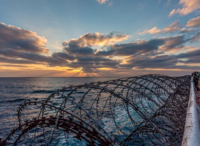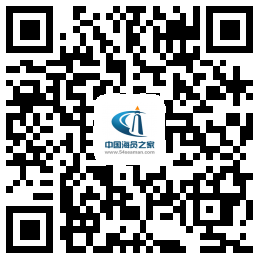ReCAAP ISC发布了5月10日至16日这一周的报告,通报了一起在亚洲发生的“CAT 41”轮武装抢劫船舶事件。
加上这次事件,自2022年1月至今,新加坡海峡共报告了22起事件,由于大家注意到该区域海上抢劫和登轮事件有所增加,所以应格外注意。
5月12日,一艘油轮在新加坡海峡分道航行制的东行车道上航行时发生了该事件。
在该事件中,船员看到有三个非法登轮的人员在引擎室附近。
船上的警报拉响,船员集合。
船上进行搜查后,没有再看到任何歹徒。
没有任何东西被盗,所有的船员都找到了,也没有受伤的报告。
此外,自2020年1月至今,没有关于船员绑架事件的报告,目前也没有船员被阿布沙耶夫集团(ASG)扣押。
21年4月23日,菲律宾武装部队对阿布沙耶夫集团成员进行了一次军事行动,其间,负责在苏禄和塔维塔维(Sulu and Tawi-Tawi)地区绑架船员的阿布沙耶夫集团领导人之一成功逃脱。
然而,在苏禄-西里伯斯海域(Sulu-Celebes Seas)和东沙巴(Eastern Sabah)附近水域绑架船员的风险仍然很高,特别是在苏禄和塔维-塔维附近水域,因为阿布沙耶夫集团仍然活跃,对过去绑架事件负责的阿布沙耶夫集团领导人仍然逍遥法外。
ReCAAP ISC敦促船长和船员向最近的沿海国和船旗国报告所有海盗和武装抢劫船舶的事件,保持警惕并采取相关预防措施,同时参考《亚洲打击海盗和武装抢劫船舶区域指南2》(Regional Guide 2 to Counter Piracy and Armed Robbery Against Ships in Asia):
亚洲打击海盗的最佳做法
The ReCAAP ISC together with IFC and Working Group from the other maritime stakeholders collaborated to publish the “Regional Guide 2 to Counter Piracy and Armed Robbery against Ships in Asia”.
ReCAAP ISC与IFC以及来自其他海事利益相关方的工作组合作发布了《亚洲打击海盗和武装抢劫船舶区域指南2》。
Key requirements
关键要求
● Understand the threat
了解威胁
● Conduct risk assessments
进行风险评估
● Implement ship protection measures
实施船舶防护措施
● Report
报告
● Cooperate
合作
this Regional Guide 2 provides the shipping community with updated MARSEC information in Asia that includes the type of piracy and armed robbery incidents, preventive measure recommendations, and relevant enforcement agencies contact details.
本《区域指南2》为航运界提供了亚洲MARSEC的最新信息,包括海盗和持械抢劫事件的类型、预防措施建议以及相关执法机构的联系方式。
亚洲当前面临的威胁
The criminal activities involving ships underway in the Asian region can be broadly grouped into the following categories:
涉及亚洲地区航行船舶的犯罪活动大致可分为以下几类:
1、Armed robbery and theft:In general, such activities are opportunistic in nature and occur when ships are in coastal waters. Ships are particularly
vulnerable when the bridge team is involved in navigating through congested waters and island groups. Incidents on board ships underway have occurred in the SOMS, particularly in the eastbound lane of the TSS in the SS, and in the South China Sea. The perpetrators’ primary aim is to steal and escape without being sighted by the crew.
1、持械抢劫和***:一般来说,这类活动是机会主义性质的,发生在船只在沿海水域时。船舶在拥挤水域和岛屿群中航行时,易受影响。此类事件发生在SOMS,尤其是SS中TSS的东行航线和南海。犯罪者的主要目标是在不被船员发现的情况下偷窃和逃跑。
2、Hijacking of ships: At the time of publication, the last hijack reported in Asia happened in May 2016. This incident involving an oil tanker in Southeast Asian waters. Hijackings of tankers normally occurs during hours of darkness; and have occurred primarily in the southern region of the South China Sea, and in the Malacca Strait from 2011 to 2017. These attacks have been restricted to small tankers especially those with low freeboard. Ships transporting specific grade of oil cargo have also been targeted, suggesting the perpetrators receive insider information on the cargo, schedule and route of the targeted ships. Ships could be hijacked for several hours or days for oil cargo to be transferred to a smaller “feeder” ship.
2、劫持船只:在出版时,亚洲最近一次被报道的劫持事件发生在2016年5月。这一事件涉及一艘在东南亚海域的油轮。劫持油轮通常发生在夜间;2011 - 2017年主要发生在南海南部地区和马六甲海峡。这些攻击仅限于小型油轮,特别是那些干舷较低的油轮。也就是说,犯罪分子掌握了运输特定等级石油货物的船舶的货物、日程、航线等内部信息。船只可能被劫持数小时或数天,以便将石油货物转移到一艘较小的“支线”船只上。
3、Abduction of crew for ransom: Serious crimes of abduction of crew for ransom carried out by the ASG occurred on board ships transiting the waters off Eastern Sabah, Malaysia and in the Sulu-Celebes Seas in the Philippines. They usually target slow-moving and low freeboard ships such as tug boats and fishing boats/trawlers. They have also attempted to attack larger ships, but without success. The objective of the perpetrators was to demand ransom money from the ship owners or relatives of the abducted victims.
3、劫持船员勒索赎金:ASG劫持船员勒索赎金的严重罪行发生在途经马来西亚沙巴州东部海域和菲律宾苏鲁-西里伯斯海域的船只上。它们通常以慢速和低干舷船只为目标,如拖船和渔船/拖网渔船。他们还试图攻击更大的船只,但没有成功。犯罪者的目的是向船主或被绑架受害者的亲属索要赎金。
4、Method and equipment used for boarding: In Asia, the perpetrators often use wooden small boats or fishing boats (to avoid being noticed) and a variety of tools including poles, hooks and lines to board ships. The use of a mothership is not common in Asia as most of the incidents occur within ports and anchorages or in coastal areas. Even for piracy incidents on high seas, mostly in the South China Sea, the use of a mothership is not common due to the relatively short distance from the shore.
4、登船方法和设备:在亚洲,犯罪者通常使用木制小船或渔船(以避免被发现)和各种工具,包括杆子、钩和线登船。使用母船在亚洲并不常见,因为大多数事故发生在港口和锚地或沿海地区。即使是在公海(主要是在中国南海)发生的海盗事件,由于距离海岸相对较短,使用母舰也不常见。
风险评估
A Risk Assessment should examine the effectiveness of the security measures already in place and identify additional prevention, mitigation and recovery measures available. The Risk Assessment should include, but not be limited to, the following:
风险评估应检查现有安全措施的有效性,并确定其他可用的预防、缓解和恢复措施。风险评估应包括但不限于以下内容:
● Crew safety (measures to prevent illegal boarding and external access to accommodation space, whilst ensuring that the crew will not be trapped inside and will be able to escape in the event of a fire, flooding, or other emergency)
船员安全(防止非法登机和外部进入起居室的措施,同时确保船员不会被困在里面,并且在发生火灾、洪水或其他紧急情况时能够逃生)
● The specific threat (who are likely the pirates/armed robbers, what do they want to achieve, how do they attack, how do they board, which weapons do they use etc). The latest on the threat situation may be obtained from the ReCAAP ISC, IFC, regional reporting centres, shipping associations, IMB, commercial intelligence providers or local sources e.g. ships’ agents.
具体的威胁(谁可能是海盗/武装抢劫犯,他们想要达到什么目的,他们如何攻击,他们如何登船,他们使用什么武器等)。有关威胁情况的最新情况可从ReCAAP ISC、IFC、区域报告中心、航运协会、IMB、商业情报提供者或当地来源(如船舶代理商)获得。
● The ship’s and company’s procedures (drills, watch rosters, chain of command, decision making processes, etc.).
船舶和公司的程序(演习、值班名册、指挥系统、决策程序等)。
● Background factors that may affect the unauthorised boarding (geography, visibility, sea-state, speed, wind, weather, swell, wave height, traffic density, and local patterns of activity, for example, other commercial ships, fishing concentration areas, etc.)
可能影响非法登船的背景因素(地理、能见度、海况、航速、风、天气、涌浪、浪高、交通密度和当地活动模式,例如其他商船、渔业集中区等)
● The ship’s characteristics/vulnerabilities/inherent capabilities to deal with the threat (for example, ship’s freeboard, speed, general arrangement, etc.)
船舶应对威胁的特性/脆弱性/固有能力(例如,船舶的干舷、速度、总体布置等)
● Ship’s procedures (such as drills, watch rotation, routine maintenance, etc.)
船舶程序(如演习、值班轮换、日常维护等)
● Planning and procedures (time/duration/season of transit – day/night)
计划和程序(运输时间/持续时间/季节-白天/晚上)
● Any statutory requirements, in particular those of the flag State and or the coastal and port State. Other requirements dictated by the company, charterer, and insurance policies should also be taken into consideration.
任何法定要求,尤其是船旗国和/或沿海国和港口国的法定要求。还应考虑公司、租船人和保险政策规定的其他要求。
本指南的基本要求
As piracy and armed robbery against ships in the Asian region has evolved over the years, this new guidance provides seafarers the requirements the should be aware of, in order to be safe:
随着亚洲地区海盗和武装抢劫船只事件多年来的发展,本新指南为海员提供了应注意的要求,以确保安全:
1、了解威胁
● Maritime threats are dynamic.
海上威胁是动态的
● Obtaining current threat information is critical for risk assessment and decision making.
获取当前威胁信息对于风险评估和决策至关重要
2、进行风险评估
● Companies must conduct risk assessments.
公司必须进行风险评估
● Identify ship protection measures.
确定船舶防护措施
3、实施船舶防护措施
● Harden the ship
加固船舶
● Brief and train the crew.
简要介绍并培训船员
● Enhanced lookout.
增强了望功能
● Follow flag State, insurance and regional guidance.
遵循船旗国、保险和区域的指导
4、报告
● Register and report to Regional Centres.
登记并向区域中心报告
● Report incidents and suspicious activities to coastal States and Regional Centres.
向沿海国和区域中心报告事件和可疑活动
● Register and report to Regional Centres.
遇袭时发出求救信号
5、合作
● Cooperate with coastal States.
与沿海国合作
● Cooperate with law enforcement to preserve evidence.
与执法部门合作保存证据
● Cooperate with welfare providers.
与福利机构合作
免责申明:翻译仅供参考,请以英文原文为准。本文仅代表作者观点,不代表中国海员之家立场。其真实性及原创性未能得到中国海员之家证实,在此感谢原作者的辛苦创作,如转载涉及版权等问题,请作者与我们联系,我们将在第一时间处理,谢谢!联系邮箱:cnisu@54seaman.com


 联系我们人工客服
联系我们人工客服



















 :1391995811
:1391995811


评论 (0人参与)